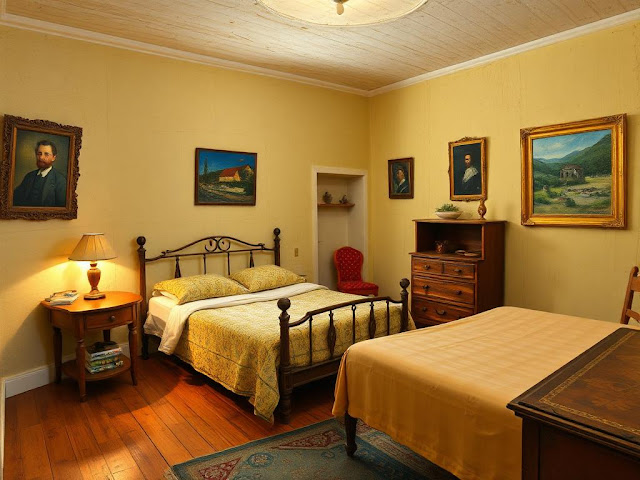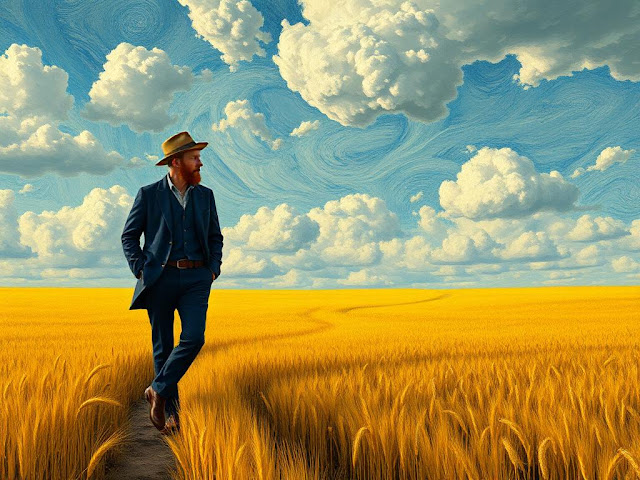Vincent van Gogh: A Visionary Artist Beyond Time
Introduction Vincent van Gogh is one of the most celebrated and influential artists in history. Known for his emotive brushstrokes, vibrant color palettes, and profound connection to nature and humanity, Van Gogh’s works continue to captivate and inspire millions. Despite facing immense personal struggles, his dedication to art left a legacy that reshaped the art world forever.
Early Life and Background Vincent Willem van Gogh was born on March 30, 1853, in Groot-Zundert, Netherlands. He was the eldest surviving child of Theodorus van Gogh, a Protestant minister, and Anna Cornelia Carbentus. Raised in a devout and culturally rich environment, young Vincent showed an early interest in art but struggled to find his calling during his youth. His journey toward becoming an artist was marked by a series of career attempts, including stints as an art dealer, teacher, and missionary.
The Turning Point Van Gogh began his artistic career relatively late, at the age of 27, with encouragement from his younger brother Theo, who would later become his greatest supporter. Theo’s emotional and financial support allowed Vincent to dedicate himself fully to art. Initially influenced by Dutch genre paintings and the works of Jean-François Millet, Van Gogh’s early works featured dark, earthy tones and focused on the lives of peasants and laborers. The Potato Eaters (1885) is a notable example from this period.
The Paris Years and Evolution of Style In 1886, Van Gogh moved to Paris to live with Theo, exposing him to the vibrant art scene of the French capital. Interactions with Impressionist and Post-Impressionist artists like Claude Monet, Edgar Degas, and Paul Gauguin transformed his artistic vision. He adopted a brighter color palette and experimented with loose, dynamic brushstrokes. During this period, he painted iconic works such as Self-Portrait with a Straw Hat (1887) and Montmartre landscapes.
Arles: The Blossoming of Genius In 1888, seeking solace and inspiration, Van Gogh moved to Arles in southern France. The luminous landscapes and rural charm profoundly influenced his work, leading to a burst of creativity. This period saw the creation of masterpieces like The Starry Night Over the Rhône, Sunflowers, and The Bedroom. Van Gogh’s use of swirling patterns, bold contrasts, and emotive intensity became hallmarks of his style.
Van Gogh’s time in Arles was also marked by his troubled friendship with Paul Gauguin. Their tumultuous relationship culminated in a heated argument that led to Van Gogh famously cutting off part of his ear. This incident highlighted the deep struggles he faced with mental health.
Mental Health Struggles and Resilience Van Gogh battled severe mental health challenges throughout his life, including depression and psychotic episodes. In 1889, he voluntarily admitted himself to the Saint-Paul-de-Mausole asylum in Saint-Rémy-de-Provence. Despite his struggles, this period produced some of his most iconic works, including The Starry Night and Irises. His ability to transform personal pain into transcendent beauty speaks to his resilience and genius.
Theo and the Importance of Family Van Gogh’s bond with his brother Theo was one of the most significant relationships in his life. Theo not only provided financial support but also believed deeply in Vincent’s talent. Their correspondence, preserved in letters, offers profound insights into Van Gogh’s thoughts, aspirations, and struggles.
Tragic End and Posthumous Recognition Vincent van Gogh died on July 29, 1890, at the age of 37, from a gunshot wound, believed to be self-inflicted. His death marked the tragic end of a life filled with turmoil and unfulfilled ambitions. During his lifetime, Van Gogh sold only a handful of paintings, but today, he is celebrated as a pioneer of modern art.
Legacy and Cultural Impact Van Gogh’s influence on art and culture is immeasurable. His works, characterized by emotional depth and innovative techniques, paved the way for Expressionism and modern art movements. Paintings like The Starry Night, Sunflowers, and Wheatfield with Crows are recognized as cultural treasures worldwide.
Van Gogh’s life story has inspired countless books, films, and exhibitions, including the critically acclaimed movie Loving Vincent (2017), which brought his paintings to life through animation.
Lesser-Known Facts About Van Gogh
Van Gogh created over 2,100 artworks, including 860 oil paintings, in just over a decade.
He often reused canvases due to financial constraints, painting over earlier works.
Van Gogh was a prolific letter writer, and his letters to Theo offer a unique perspective on his creative process.
Conclusion Vincent van Gogh’s journey from obscurity to becoming one of the most revered artists in history is a testament to the transformative power of art and perseverance. Despite his personal struggles, he left behind a body of work that continues to inspire and move audiences worldwide. His life and legacy remind us of the enduring impact of creativity and the human spirit.
Dive into the world of Vincent van Gogh and experience the passion, pain, and brilliance of an artist who dared to see the world differently.
Find out my favorite Health and Fitness products here: https://linktr.ee/iamatiiq





.jpg)

.jpg)
Comments
Post a Comment